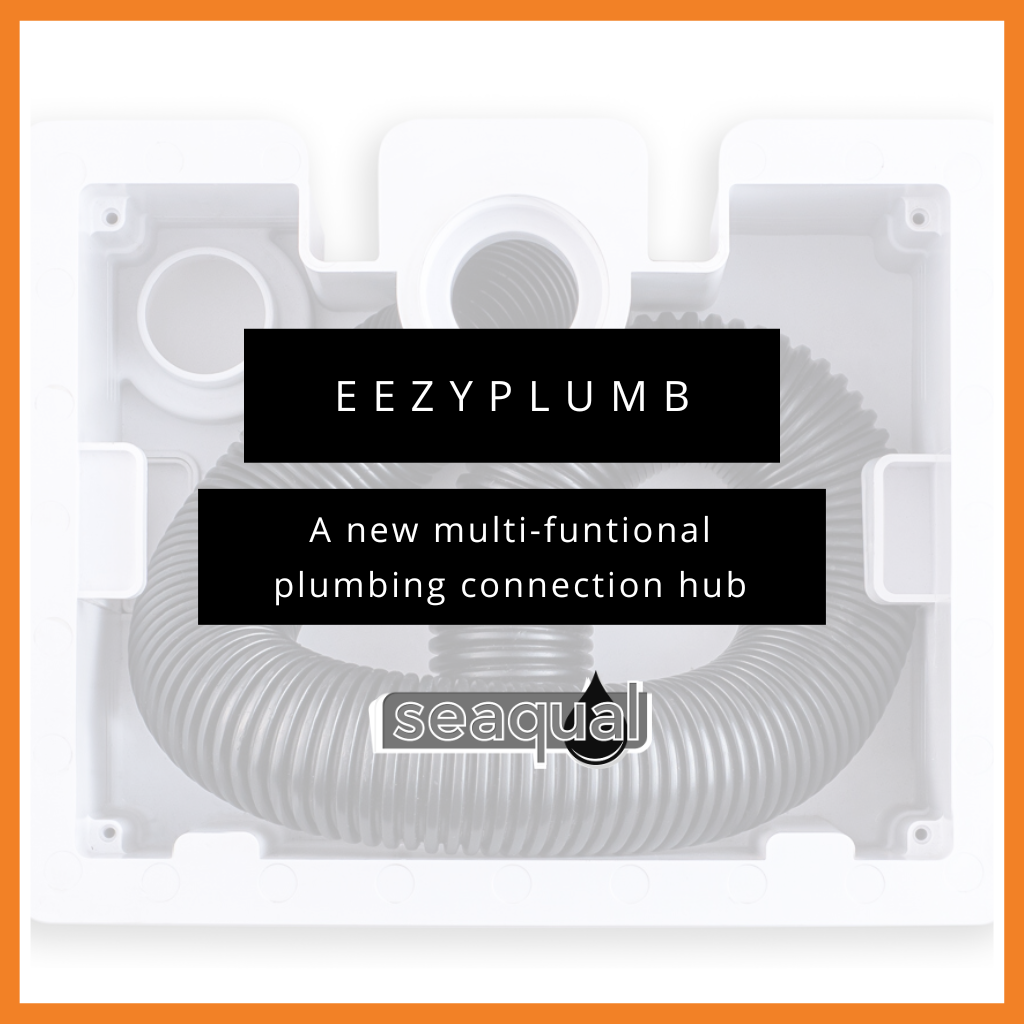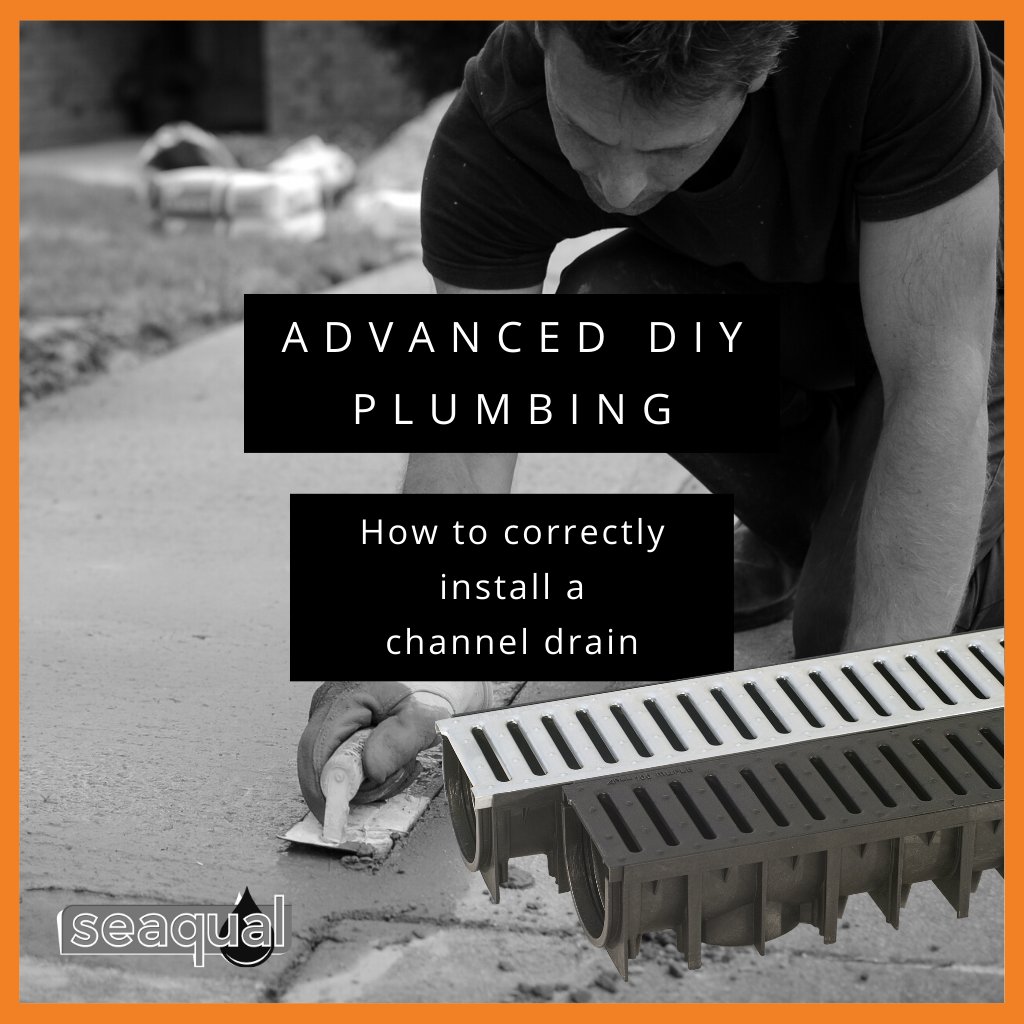What is an odour trap?
Odour traps are installed between a drain and the sewerage system, and their main function is to act as a barrier preventing foul odours from creeping back up the sewer pipes, through the drain and into a home. Not only do these sewer gasses have an unbearable smell but they are actually harmful to humans. Sewer gasses contain hydrogen sulphate which can cause an array of health issues and symptoms in people when they are exposed for an extended period of time. So plumbing traps play a major role in the health and safety of a building’s occupants.

Odour Trap Installed Under a Basin - Canva & Seaqual Image
How does a water seal work?
As the name suggests, traps work by creating a containment for water in an area between the drain and the sewerage pipe, usually in the form of a u-shaped bend in the pipe. The water situated within this bend effectively blocks air from moving through the pipe, essentially trapping the air within the pipe and creating a seal between the foul sewerage pipe air and the air within the home. Without this simple water seal, your home would smell like sewerage all the time. Whenever someone opens a tap, water flows down into the drain and through the trap but when the tap is turned off and water stops flowing, a small amount will remain in this area creating a constant barrier.

Water Seal Diagram - Seaqual Image
How deep does a water seal need to be?
The minimum depth requirement of a water seal is different depending on the type of plumbing system used in a building (See our blog on Plumbing Systems in Buildings for more information on the various types). The difference between one plumbing system and another is determined by how it is ventilated allowing air pressure to be regulated in the system.
According to the South African National Standards (SANS), the minimum depth of a water seal in a one-pipe and two-pipe plumbing system is 65mm & 40mm respectively, and the minimum depth in a single-stack & single-stack partially ventilated plumbing system is 75mm and therefore all drains that are manufactured and installed in South Africa must accommodate these minimum requirements in order to be considered as compliant.
Seaqual’s WetFloor Drain (trap depth of 75mm) is suitable for use in all South African Plumbing Systems, whereas Seaqual’s LoLo Drain has been certified as fit for purpose on One-pipe and Two-pipe Plumbing Systems only, as the trap depth does not meet the 75mm requirement for Single Stack Systems.

The main reason for this regulation is to prevent total evaporation of the water seal in the trap. Water seals also prevent insects and bacteria from entering a home through waste pipes. When water is left standing in a warmer environment it will naturally begin to evaporate and the same is true for stagnant water in a drain. The minimum depth requirement is there as a guideline to prevent the water seal from evaporating entirely, especially in houses that stand empty for long periods of time like vacation homes.
What are the types of traps?
Currently, there are about 14 different traps used by plumbers around the world but for this piece we are going to focus on the 3 types that Seaqual manufacture and that is the P-trap, S-trap (created with our 90° bend S-Extension) and our innovative wet floor shower trap, the Well Trap.



The P and S-traps are called this simply because of their shape. The P-shape and S-shape are created with bends in the piping forming an area where a small amount of water is trapped all the time.
Seaqual’s Well Trap is a removable shower trap that allows water to easily flow through it but keeps a decent amount trapped at all times. This device is a great alternative to a standard P-trap for the following reasons:
- It prevents total evaporation of the water seal in homes that are left vacant for long periods of time.
- It combats siphonage of the water seal that can occur in high-rise buildings with multiple floors.
- It can quickly and easily be removed and cleaned by the homeowner.
- The Well Trap will catch small objects such as earrings or chains that fall down the drain, thereby preventing them from being lost forever.
- The removable aspect also allows the plumber to access the pipe to rod any blockages.

Well Trap Installed in a Shower - Seaqual Image
Visit our Product Videos page for more information on our WetFloor and LoLo shower drain options.
Thanks for reading and happy plumbing!



